This week our youngest students are looking at special places locally and around Australia, slightly older students are considering plants and animals around the world, while our older students are studying aspects of diversity in Australia.
Foundation/Prep/Kindy to Year 3
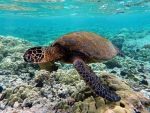 Students in standalone Foundation/Prep/Kindy (Unit F.4) and combined classes with Year 1 (F-1.4) are thinking about special places this week – what places are special to them and their families? What places are special in Australia? This focus gives the teacher a chance to guide the students through the process of considering natural beauty and how we and other agencies, such as the government, can look after special places and places of natural beauty. Students in Years 1 (Unit 1.4), 2 (Unit 2.4) and 3 (Unit 3.4) are continuing their focus on the stories of families from around the world from week 1. This week Year 1 and 2 students are focusing on plants and animals from the places described in the stories in week 1. Students in Year 3 also consider the role of climate in the diversity of plants and animals.
Students in standalone Foundation/Prep/Kindy (Unit F.4) and combined classes with Year 1 (F-1.4) are thinking about special places this week – what places are special to them and their families? What places are special in Australia? This focus gives the teacher a chance to guide the students through the process of considering natural beauty and how we and other agencies, such as the government, can look after special places and places of natural beauty. Students in Years 1 (Unit 1.4), 2 (Unit 2.4) and 3 (Unit 3.4) are continuing their focus on the stories of families from around the world from week 1. This week Year 1 and 2 students are focusing on plants and animals from the places described in the stories in week 1. Students in Year 3 also consider the role of climate in the diversity of plants and animals.
Years 3 to 6
 Students in Years 3 (Unit 3.8), 4 (Unit 4.4), 5 (Unit 5.4) and 6 (Unit 6.4) are studying different aspects of diversity this week. Students in year 3 are looking at Aboriginal people and the environment, in the context of climate. Students in Year 4 consider both Aboriginal people and technology with respect to the Australian environment. Students in year 5 are starting to consider how Aboriginal people’s interactions with the environment over millennia have set the stage for the recognition of Native Title in Australia; while students in year 6 examine the history of Aboriginal suffrage and Native Title in Australia. These studies of diversity in Australia provide information for the students to start planning a celebration of identity and diversity in the last week. Students in Years 3 to 6 also continue with their scientific experiment of growing a plant.
Students in Years 3 (Unit 3.8), 4 (Unit 4.4), 5 (Unit 5.4) and 6 (Unit 6.4) are studying different aspects of diversity this week. Students in year 3 are looking at Aboriginal people and the environment, in the context of climate. Students in Year 4 consider both Aboriginal people and technology with respect to the Australian environment. Students in year 5 are starting to consider how Aboriginal people’s interactions with the environment over millennia have set the stage for the recognition of Native Title in Australia; while students in year 6 examine the history of Aboriginal suffrage and Native Title in Australia. These studies of diversity in Australia provide information for the students to start planning a celebration of identity and diversity in the last week. Students in Years 3 to 6 also continue with their scientific experiment of growing a plant.

 Students in standalone Foundation/Prep/Kindy classes (
Students in standalone Foundation/Prep/Kindy classes ( Students in Year 3 doing
Students in Year 3 doing 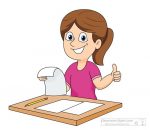 The last term of the school year – traditionally far too short and crowded with many events, both at and outside of school. OpenSTEM’s® Understanding Our World® program for HASS + Science ensures that not only are the students kept engaged with interesting material, but that teachers can relax, knowing that all curriculum-relevant material is covered by the middle of the term, ensuring enough time for marking and preparation of reports. Furthermore, following the OpenSTEM® Understanding Our World® program across an entire year guarantees that your students have met the curriculum requirements for all of History, Geography, Civics and Citizenship, Economics and Business (HASS) and Science for the whole year, matched to their year-level, even in multi-year level classes. This term our youngest students are reviewing some of the material covered earlier in the year and then preparing for a Play (with props and dress-ups) matched to this material. Students in Years 1 to 3 examine modern families around the world and then prepare a short presentation or dramatisation based on what they have learned. Older students are studying migrants and cultural identity and using the information to plan an end-of-year celebration of cultural diversity. These students also hold a class election, with preferential voting.
The last term of the school year – traditionally far too short and crowded with many events, both at and outside of school. OpenSTEM’s® Understanding Our World® program for HASS + Science ensures that not only are the students kept engaged with interesting material, but that teachers can relax, knowing that all curriculum-relevant material is covered by the middle of the term, ensuring enough time for marking and preparation of reports. Furthermore, following the OpenSTEM® Understanding Our World® program across an entire year guarantees that your students have met the curriculum requirements for all of History, Geography, Civics and Citizenship, Economics and Business (HASS) and Science for the whole year, matched to their year-level, even in multi-year level classes. This term our youngest students are reviewing some of the material covered earlier in the year and then preparing for a Play (with props and dress-ups) matched to this material. Students in Years 1 to 3 examine modern families around the world and then prepare a short presentation or dramatisation based on what they have learned. Older students are studying migrants and cultural identity and using the information to plan an end-of-year celebration of cultural diversity. These students also hold a class election, with preferential voting.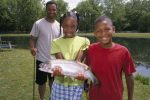 Our youngest students – those in Foundation/Prep/Kindy (
Our youngest students – those in Foundation/Prep/Kindy (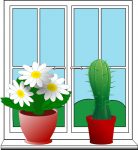 Students in Years 3 (
Students in Years 3 (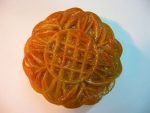 The second half of the year can be tough for younger students – they are often starting to get tired and attention may be flagging at this stage. In order to liven things up, the units for Foundation/Prep/Kindy (
The second half of the year can be tough for younger students – they are often starting to get tired and attention may be flagging at this stage. In order to liven things up, the units for Foundation/Prep/Kindy (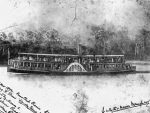 The older students have finished or are finishing off their
The older students have finished or are finishing off their  Students in Foundation/Prep/Kindy (
Students in Foundation/Prep/Kindy ( Older students are completing their main term research projects by finishing their
Older students are completing their main term research projects by finishing their  Our youngest students (
Our youngest students ( Students in integrated Year 3/4 classes (
Students in integrated Year 3/4 classes ( Each year level focuses on a different aspect of Australian history and enough topics are supplied to ensure that each student is working on new information, even in multi-age classes. Instead of finding a continual stream of new, novel HASS units, or repeating material some students have covered before, OpenSTEM’s
Each year level focuses on a different aspect of Australian history and enough topics are supplied to ensure that each student is working on new information, even in multi-age classes. Instead of finding a continual stream of new, novel HASS units, or repeating material some students have covered before, OpenSTEM’s
Aunt Madge's Suitcase was a really fun activity! The children were really interested in all the places she travelled to,…
Indi Alford, Teacher